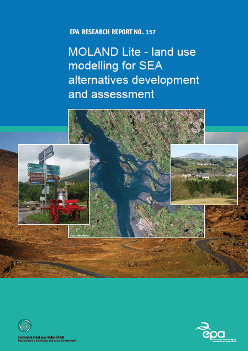Research 157: MOLAND Lite - Land use modelling for SEA alternatives development and assessment
Summary: MOLAND is a land use computer model that is based on socio-economic and demographic data and provides an image of the possible future. The model can ascertain what land use planning alternatives will look like over set time periods, and so it can be used to assess, monitor and model the development of (sub-)regional environments.

MOLAND is a land use computer model that is based on socio-economic and demographic data and provides an image of the possible future. The model can ascertain what land use planning alternatives will look like over set time periods, and so it can be used to assess, monitor and model the development of (sub-)regional environments.
It was created by the Research Institute for Knowledge Systems (RIKS) and the Joint Research Centre (JRC) of the European Commission. In order for the model to be used with full confidence nationally, calibration is necessary for the Republic of Ireland. Therefore, MOLAND “Lite”, resulting from the SEA Alternatives project (refer to EPA Research project report No. 157), has been developed only as a demonstration model, in order to demonstrate its applicability to the development and assessment of alternatives in Strategic Environmental Assessment (SEA).
See also:
Research 157: Developing and Assessing Alternatives in Strategic Environmental Assessment (SEA)
https://www.epa.ie/media/epa-2020/publications/research/Research-157-MOLAND-Lite---thumbnail.png